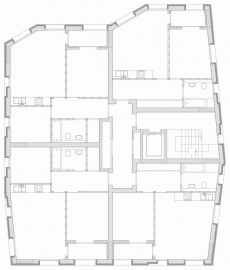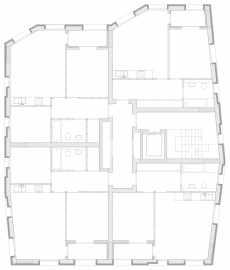Urban Housing Finsbury Park, London
The project involves the complete redevelopment of an urban site on Seven Sisters Road, on the edge of Finsbury Park in north London. Three new urban villas of varying height are arranged around a shared pace and are treated as a tightly knit cluster, continuing the typology of villas on Seven Sisters Road and providing forty-four one- to four-bedroom apartments for mixed tenure. As a reaction to the paper-thin appearance of much affordable housing, we developed buildings that feel solid and substantial, with a strong tectonic expression of brick and concrete elements that gives them a sense of permanence and weight reminiscent of the nineteenth century villas that exist in this area of London.
The walls are arranged in piers between full height window assemblies with a structure of concrete flat slab and columns. The brickwork, in burnt browns and reds with flush mortar joints, appears in counterpoint to the gently undulating and modulated external wall.
The faint forms of bay windows and set-backs suggest both familiarity and difference in a way that feels appropriate within this
urban situation, while the space between buildings is charged by the subtle differences between building volumes and their relation to one another. Apartments are arranged in each corner of the building plan with a central lift core and stair located on an external wall.
Key environmental features:
The project redevelops an existing urban site and maximises its potential through a strategy of densification. The predominant material of the buildings is brick, which is relatively low in its embodied energy content. Composite timber and aluminium
windows were used, which balance maintenance requirements with a reduced environmental impact. The load-bearing structure of the buildings is a reinforced concrete frame, which produces little construction waste and is completely recyclable at the end of the buildings life. The schemes target for CO2 emission is less than 30 kg/m3 per dwelling each year, i.e. between 5 and 10 kg less than required by building regulations, and U-values for each dwelling represent a 9% improvement on current standards, resulting in minimal heat loss and reduced energy consumption.
The environmental impact assessment of the materials used in terms of energy consumption and CO2 emissions at various stages of the construction process was assessed and all were rated A according to the BRE Green Guide to Housing.
The project was designed to make use of solar gain to reduce lifecycle energy use. Within the constraints of a dense urban site, most of the elevation is orientated towards the south, while the facetted elevations turn towards the evening sunlight. Main rooms are located towards the main facades to receive maximum sunlight, while service rooms tend to be located on the east and west facades. Each of the three buildings is compact in plan and roughly square in proportion, so as to minimise external envelope.

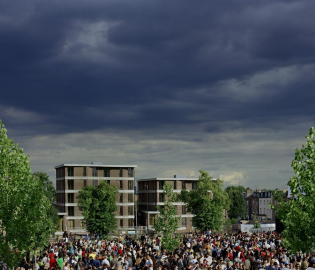
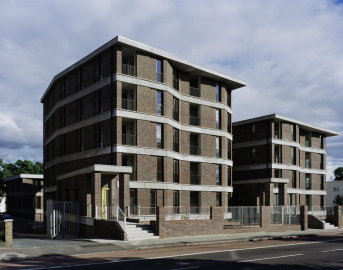
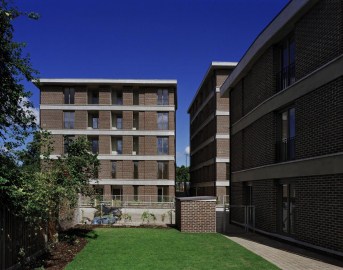
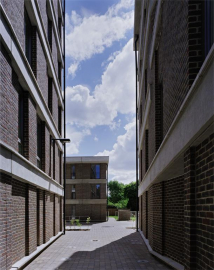

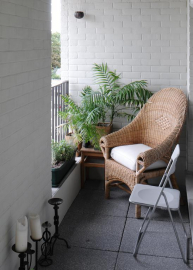
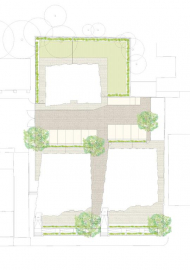

 PLANTA.jpg)
 ALZADO.jpg)
